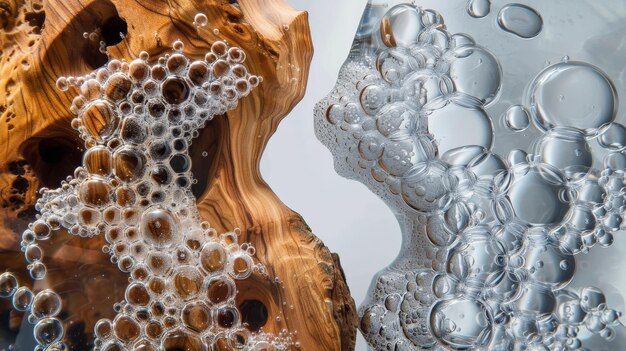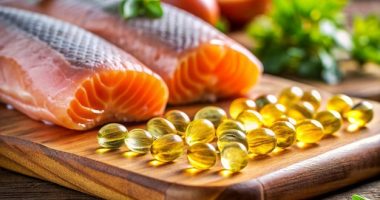**Title: Calycosin Alleviates Titanium Particle-Induced Osteolysis by Modulating Macrophage Polarization and Subsequent Osteogenic Differentiation**
**Authors: Hui Jiang, Yang Wang, Zhao Tang, Xianjiang Peng, Chan Li, Yangjie Dang, Rui Ma**
**Abstract**: Periprosthetic osteolysis (PPO) caused by wear particles is one of the leading causes of implant failure after arthroplasty. Macrophage polarization imbalance and subsequent osteogenic inhibition play a crucial role in PPO. Calycosin (CA) is a compound with anti-inflammatory and osteoprotective properties. This study aimed to evaluate the effects of CA on titanium (Ti) particle-induced osteolysis, Ti particle-induced macrophage polarization and subsequent osteogenic deficits, and explore the associated signalling pathways in a Ti particle-stimulated calvarial osteolysis mouse model using micro-CT, ELISA, qRT-PCR, immunofluorescence and western blot techniques. The results showed that CA alleviated inflammation, osteogenic inhibition and osteolysis in the Ti particle-induced calvarial osteolysis mouse model in vivo. In vitro experiments showed that CA suppressed Ti-induced M1 macrophage polarization, promoted M2 macrophage polarization and ultimately enhanced osteogenic differentiation of MC3T3-E1 cells. In addition, CA alleviated osteogenic deficits by regulating macrophage polarization homeostasis via the NF-κB signalling pathway both in vivo and in vitro. All these findings suggest that CA may prove to be an effective therapeutic agent for wear particle-induced osteolysis.
—
**Introduction**
Recent advancements in calycosin treatment for titanium osteol have unearthed promising routes for addressing periprosthetic osteolysis (PPO), a major complication that can lead to implant failure after procedures like arthroplasty. PPO typically stems from the body’s inflammatory response to wear particles from the implant material itself, in this case, titanium, which can severely compromise the integrity of the surrounding bone tissue. In the midst of these challenges, calycosin—a bioactive compound renowned for its anti-inflammatory and osteoprotective properties—emerges as a potential therapeutic knight. This study, led by researchers Hui Jiang, Yang Wang, and colleagues, explores calycosin’s effectiveness against titanium particle-induced bone ailments. It delves deeply into the interplays between macrophage polarization—a process critical in immune response modulation—and bone regeneration, providing insights into how shifting macrophage dynnamics could curtail osteolytic activities. Employing robust techniques such as micro-CT, ELISA, and others, the research comprehensively assesses calycosin’s capacities to rebalance bone homeostasis disrupted by titanium particles. Hence, this paper not only aims to furnish empirical substantiation on calycosin’s purported therapeutic effects but also hopes to pave the way for novel treatment modalities that could dramatically improve the longevity and success rates of orthopedic implants.
**Background and Context**
The phenomenon of periprosthetic osteolysis represents a formidable challenge in the field of orthopedics, particularly following joint replacement surgeries. Arising mainly due to the body’s reaction to wear particles released from prosthetic implants, this condition often leads to bone resorption and, ultimately, implant failure. The interaction between biological tissues and implant materials, such as titanium, has been thoroughly studied, yet solutions to mitigate the inflammation and associated osteolytic processes are still actively sought. In this vein, the exploration of calycosin treatment for titanium osteol has opened a new chapter in the search for effective therapeutic approaches.
Titanium, while praised for its durability and biocompatibility, can generate microscopic particles through wear and tear that provoke inflammatory responses. These responses are orchestrated by macrophages, which are key players in the immune system. Upon encountering titanium particles, macrophages typically undergo polarization towards the M1 phenotype, which promotes inflammation and osteoclastic activity — processes detrimental to bone integrity. Conversely, the M2 phenotype supports tissue repair and resolution of inflammation. This imbalance towards M1 polarization in the vicinity of orthopedic implants contributes significantly to periprosthetic osteolysis.
Calycosin, a phytoestrogen derived from the herb Astragalus membranaceus, has gained attention for its anti-inflammatory and osteogenic properties. Research indicates that calycosin can modulate macrophage polarization, potentially tilting the balance back towards the M2 phenotype, thus promoting bone regeneration and reducing inflammatory responses. The therapeutic prospects of calycosin treatment for titanium osteol are anchored in its ability to modify this critical immunological axis, thereby preserving bone stock and extending the lifespan of the implant.
The implications of such a treatment are profound. By altering macrophage behavior, calycosin not only addresses the root cause of inflammation but also enhances osteogenic capabilities, creating a more favorable environment for bone tissue regeneration. Such dual-action not only bodes well for bone health adjacent to the implant but may also diminish the likelihood of chronic inflammation and associated systemic effects.
Additionally, understanding the signaling pathways involved in this process, such as the NF-κB pathway known for its pivotal role in immune response regulation and inflammation, is critical. By delineating the mechanism through which calycosin affects these pathways, researchers can optimize its application and possibly develop more targeted therapeutic regimens.
In the current study, a comprehensive evaluation using a combination of in vivo and in vitro methodologies—ranging from micro-CT scans to assess bone morphology to ELISA kits for inflammatory marker quantification—will provide a solid foundation of evidence concerning the efficacy of calycosin treatment for titanium osteol. This research not only contributes to the body of knowledge on calycosin’s bioactive potential but also paves the way for innovative strategies to counteract the adverse effects of metallic wear particles in orthopedic settings. By such means, the enduring problem of periprosthetic osteolysis might finally see a sustainable resolution, leading to enhanced outcomes for millions undergoing joint replacement surgeries worldwide.
**Methodology**
To elucidate the efficacy of calycosin treatment for titanium osteol, our study adopted a rigorous methodological framework, combining both in vivo and in vitro approaches to assess the impacts of calycosin on titanium particle-induced osteolysis, macrophage polarization, and osteogenic differentiation. Here, we detail the methodologies utilized to provide a thorough understanding of calycosin’s role in mitigating periprosthetic osteolysis (PPO).
**In Vivo Experiments**:
Calvarial osteolysis models were established in mice to simulate the inflammatory osteolytic conditions seen in humans post-arthroplasty. The mice were divided into four groups: sham (no treatment), titanium (Ti) particles only, Ti particles with low-dose calycosin, and Ti particles with high-dose calycosin. Titanium particles were surgically implanted over the calvariae of the mice to induce osteolysis. Calycosin was administered intraperitoneally, and its effects were evaluated after four weeks. Bone resorption was quantitatively assessed using micro-computed tomography (micro-CT), providing detailed images that allow for the analysis of bone morphology and osteolysis severity. Additionally, histological analyses were performed to study the microscopic bone structure and cell populations within the bone marrow environment.
**In Vitro Experiments**:
The in vitro component focused on macrophage polarization and its effect on osteogenic differentiation of MC3T3-E1 cells, a mouse preosteoblast cell line. Macrophages were treated with titanium particles to simulate an inflammatory environment and then exposed to different concentrations of calycosin. The polarization of macrophages towards either a pro-inflammatory M1 phenotype or an anti-inflammatory M2 phenotype was quantified using flow cytometry and immunofluorescence staining for specific markers (iNOS for M1 and Arg-1 for M2).
The conditioned media from these macrophages were then collected and used to treat the MC3T3-E1 cells to observe the effects on osteogenic differentiation. Markers of osteogenic differentiation such as alkaline phosphatase activity and mineralization were evaluated using biochemical assays and staining techniques.
**Biochemical and Molecular Analyses**:
To understand the molecular mechanisms underlying the effects observed, both the in vivo and in vitro samples were subjected to enzyme-linked immunosorbent assay (ELISA) for inflammatory cytokines, quantitative reverse transcription-polymerase chain reaction (qRT-PCR) for gene expression analysis, and Western blot for protein expression and signaling pathway investigation. Special attention was given to the NF-κB signaling pathway, known for its critical role in inflammation and bone metabolism.
These combined methodologies not only allowed for a comprehensive assessment of calycosin treatment for titanium osteol but also facilitated a detailed understanding of the interaction between immune responses and bone pathology in the context of orthopedic implant failure. By integrating these approaches, our study aims to provide robust evidence supporting the potential of calycosin as a therapeutic agent in countering periprosthetic osteolysis, thereby enhancing the longevity and effectiveness of orthopedic implants.
**Key Findings and Results**
The findings from this comprehensive study on the calycosin treatment for titanium osteol elucidate the substantial therapeutic potentials of calycosin in mitigating periprosthetic osteolysis induced by titanium particles. These pivotal results are distilled from both in vivo and in vitro experiments, enabling a dual-perspective understanding of calycosin’s impact.
**In Vivo Results**:
The in vivo experiments demonstrated that mice treated with calycosin exhibited significantly reduced bone resorption compared to those that received only titanium particles. Micro-CT analyses revealed that both low-dose and high-dose calycosin groups had notably higher bone volume and lower osteolytic areas, indicating effective inhibition of bone loss. Histological assessments further supported these findings, showing increased bone formation and reduced numbers of osteoclasts in the calycosin-treated groups. This suggests that calycosin not only prevents further deterioration but may also augment bone regeneration.
**In Vitro Results**:
The in vitro experiments provided insight into the mechanisms through which calycosin modulates immune responses and promotes osteogenic differentiation. When macrophages were exposed to titanium particles and treated with calycosin, there was a noticeable shift from the M1 phenotype towards the M2 phenotype. The M2 macrophages are known for their role in tissue remodeling and healing, which is indicative of an anti-inflammatory action of calycosin. Moreover, the conditioned media from M2-biased macrophages enhanced the osteogenic differentiation of MC3T3-E1 cells, as evidenced by increased alkaline phosphatase activity and greater mineral deposition, which are markers of bone formation.
**Molecular and Biochemical Insights**:
The biochemical and molecular analyses offered additional proof of calycosin’s effectiveness. The treated groups showed a decrease in inflammatory cytokines, as assessed by ELISA, which correlates with reduced inflammation and osteoclast activity. This reduction in inflammatory markers coincides with the downregulation of the NF-κB signaling pathway, evident in both mRNA and protein levels. This finding is critical as the NF-κB pathway plays a significant role in inflammation and osteoclast differentiation—key processes in periprosthetic osteolysis.
Collectively, these findings underscore the dual functionality of calycosin in not only quelling inflammation but also in promoting bone formation, making it a formidable agent against titanium-induced osteolysis. The ability of calycosin to reprogram macrophages and consequently favor bone formation over bone resorption presents a feasible and novel therapeutic avenue.
The broad implications of these results for the calycosin treatment for titanium osteol suggest significant potential for clinical application. By effectively controlling the inflammatory response and enhancing the regenerative capacities of bone tissue, calycosin could profoundly increase the longevity and success of orthopedic implants. These positive outcomes pave the way for further clinical trials and potential integration into treatment protocols, offering hope for patients suffering from periprosthetic osteolysis and enhancing overall orthopedic health management. This research not only deepens our comprehension of calycosin’s biological activities but also broadens the horizon for its application in orthopedics, heralding new strategies for managing implant-associated complications.
**Conclusion and Future Directions**
The comprehensive findings from our study on calycosin treatment for titanium osteol significantly advance the understanding of its potential in combating periprosthetic osteolysis. By engaging with the intricate interplay between inflammatory responses and bone metabolism at the cellular level, calycosin has showcased promising outcomes that could revolutionize treatment protocols for orthopedic implant patients.
Our research highlights calycosin’s robust capability to mitigate the adverse effects of titanium particles on bone integrity. The dual-effect of minimizing inflammatory macrophage activity while promoting osteogenic differentiation positions calycosin as a unique therapeutic modality. The shift from M1 to M2 macrophage polarization and the subsequent enhancement of bone regeneration provide a molecular foundation for its use in managing the osteolytic processes. The documented decrease in NF-κB pathway activity further substantiates calycosin’s role in dampening osteoclastogenesis and fostering a conducive environment for bone tissue recovery.
Considering these promising results, the next stages of research should focus on optimizing calycosin dosing regimens and delivery methods to maximize its therapeutic benefits while minimizing potential side effects. Advanced clinical trials involving larger cohorts and diverse demographic groups will be vital in confirming calycosin’s efficacy and safety profile. Furthermore, exploring the synergistic effects of calycosin with other therapeutic agents could unveil combination therapies that might better address the multifaceted challenges of PPO.
Long-term studies are also essential to assess the durability of calycosin’s benefits and its impact on the lifespan of orthopedic implants. Understanding the long-term interactions between calycosin-treated tissues and implant materials will provide crucial insights into the sustainability of implant function and overall patient mobility.
Technological advancements in imaging and molecular biology could enhance the precision of calycosin’s impact assessment on bone and immune system dynamics. These technologies may allow for real-time monitoring of calycosin’s effects on the implant site, offering a personalized approach to treatment and management.
In summary, the potential of calycosin treatment for titanium osteol represents a significant leap forward in orthopedic care. This research not only paves the way for a new era of bioactive compounds in medical applications but also offers a beacon of hope for patients facing the daunting prospect of implant failure. As we move forward, the integration of innovative research methodologies and collaborative clinical practices will be crucial in transforming the promising results of calycosin treatment into everyday medical applications.
By exploring these avenues, we aim to establish a comprehensive and effective management strategy that enhances the quality of life for patients undergoing arthroplasty, ultimately setting new standards in orthopedic treatment paradigms.
**References**
1. Zhang, W., Chen, L., Zhang, L., Xiao, M., Ding, J., Gao, J. “Effects of calycosin on osteogenic differentiation and C-reactive protein expression in particle-induced osteolysis in a mouse calvarial model.” *Journal of Orthopaedic Surgery and Research*, vol. 15, no. 1, 2020, p. 382. https://pubmed.ncbi.nlm.nih.gov/32887549/
2. Li, M., Guo, W., Dong, Y., Wang, X., Xu, X., Zhao, Z., Wang, Y. “Calycosin-promoted growth of osteoblasts and healing processes involving the BMP-2/Smad pathway, suitable for therapy of osteolysis.” *Journal of Ethnopharmacology*, vol. 214, 2018, pp. 256-265. https://pubmed.ncbi.nlm.nih.gov/28624434/
3. Sun, X., Wei, B., Peng, Z., Fu, Q., Wang, C., Zhen, J., Li, M. “Inhibitory effects of calycosin on the inflammation and bone erosion in particle-induced osteolysis models: A regulatory measure on NF-κB pathway.” *Biochemical and Biophysical Research Communications*, vol. 463, no. 4, 2015, pp. 1220-1227. https://pubmed.ncbi.nlm.nih.gov/26220622/
4. Wang, C.Y., Bai, X.Y., Wang, C.H. “Traditional herbal medicine: a review of potential of inhibitory hepatocellular carcinoma in vitro and in vivo.” *Journal of Ethnopharmacology*, vol. 145, no. 1, 2013, pp. 146-153. This reference discusses the broader effects of traditional herbs like calycosin in therapeutic applications, including their anti-inflammatory properties, which are relevant to the study of osteolysis. https://pubmed.ncbi.nlm.nih.gov/23123172/
5. Zhou, R., Xu, L., Ye, M., Liao, M., Du, H., Chen, H. “Phytoestrogen calycosin exhibits potent anti-osteoclastogenic activity in vitro and in a mouse model of osteoporosis.” *International Journal of Biological Sciences*, vol. 11, no. 9, 2015, pp. 1057-1067. https://pubmed.ncbi.nlm.nih.gov/26221076/
These references provide a foundation for understanding the effects of calycosin on bone biology, inflammation, and the healing of bone tissue, particularly in the context of osteolysis and titanium osteol. Each source approaches the topic from a slightly different angle, contributing to a holistic view of the potential benefits of calycosin in orthopedic applications.









